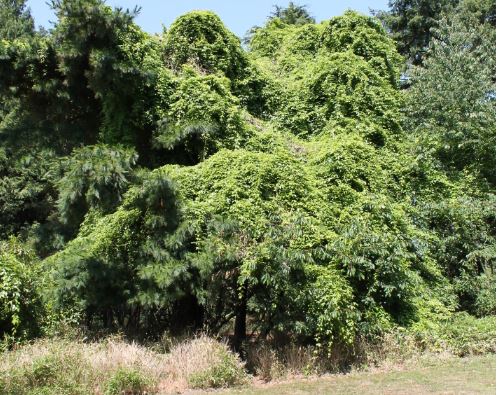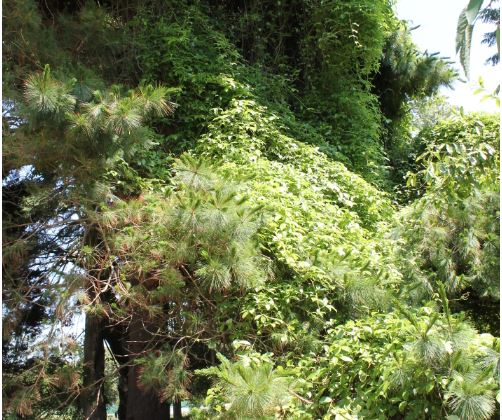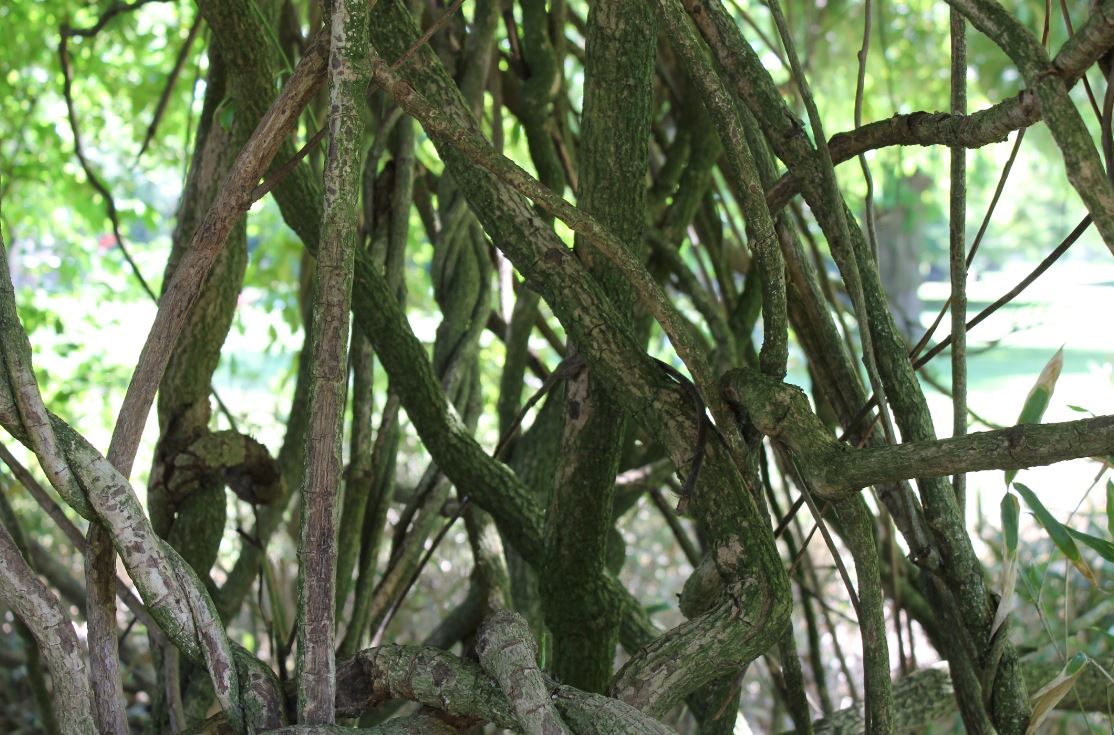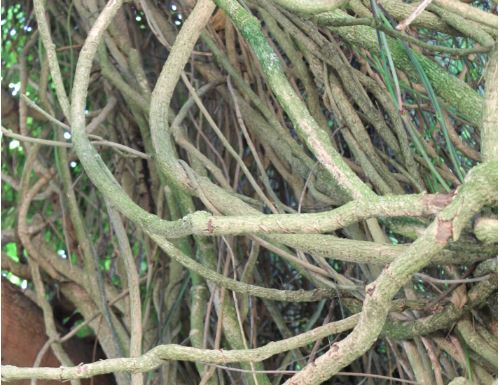The Facts
Tree Type: This is an evergreen vine which climbs up the trunk and branches of other plants and trees in order to reach the light. The tops of the vines push through the leaf canopy and spread out, forming a dense network of branches.
Location: This plant is native to Asia, and is best known in Japan. Since being transplanted to Europe, it has been grown in gardens all around the world.
Ecology: Once it is started, this vine can really take over its host tree as you can see from this example where the umbrella pine is almost covered.. It is covered in scented pretty white flowers with a purple tinge from April to June. In summer it produces a sweet purple fruit in the upper branches.



